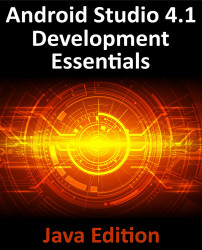86.2 Adding Dynamic Feature Support to the Project
Before embarking on the implementation of the app, two changes need to be made to the project to add support for dynamic features. Since the project will be making extensive use of the Play Core Library, a directive needs to be added to the build configuration to include this library. Within Android Studio, open the app level build.gradle file (Gradle Scripts -> build.gradle (Module: DynamicFeature.app)), locate the dependencies section and add the Play Core Library as follows (keeping in mind, as always, that a newer version of the library may now be available):
.
.
dependencies {
.
.
implementation 'com.google.android.play:core:1.8.0'
.
.
}
Once a dynamic feature module has been downloaded, it is most likely that immediate access to code and resource assets that comprise the feature will be required by the user. By default, however, newly installed feature modules...



